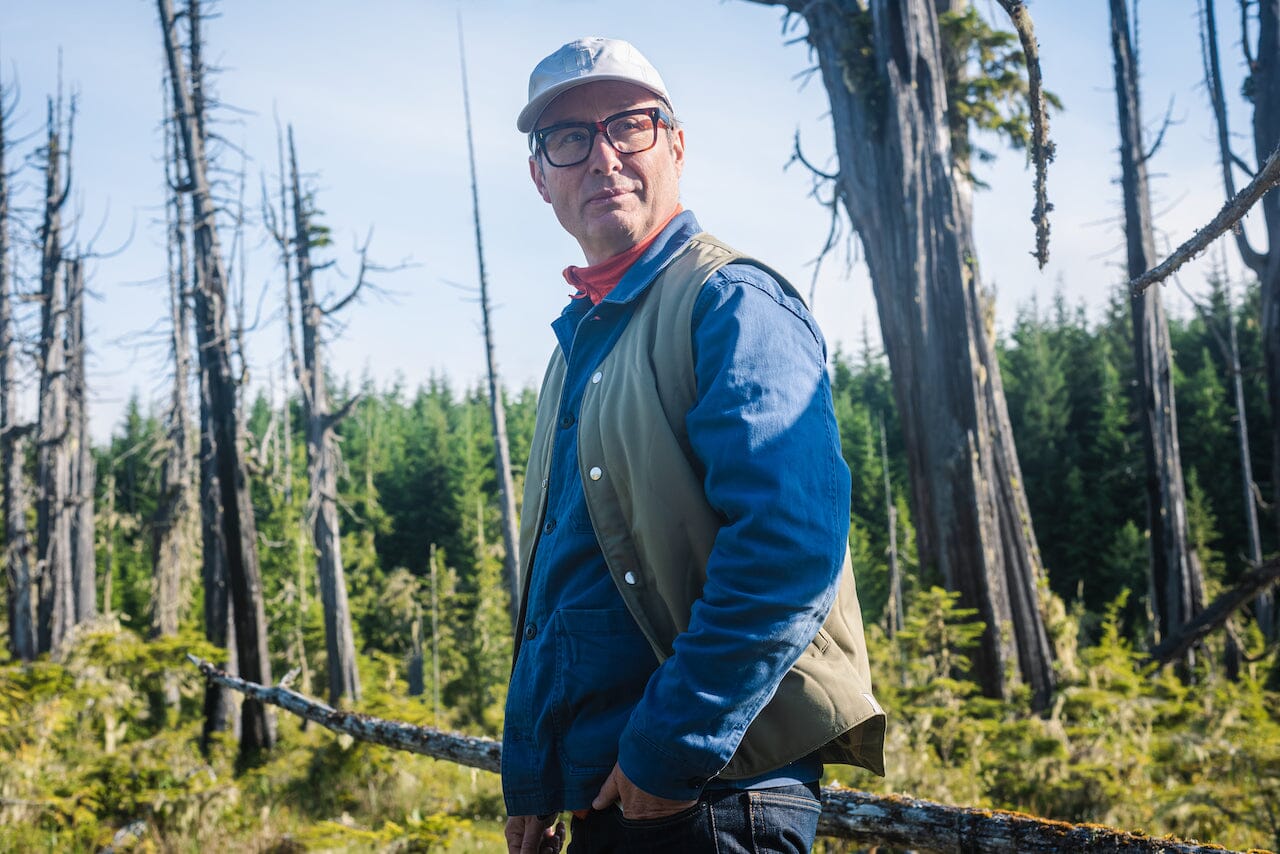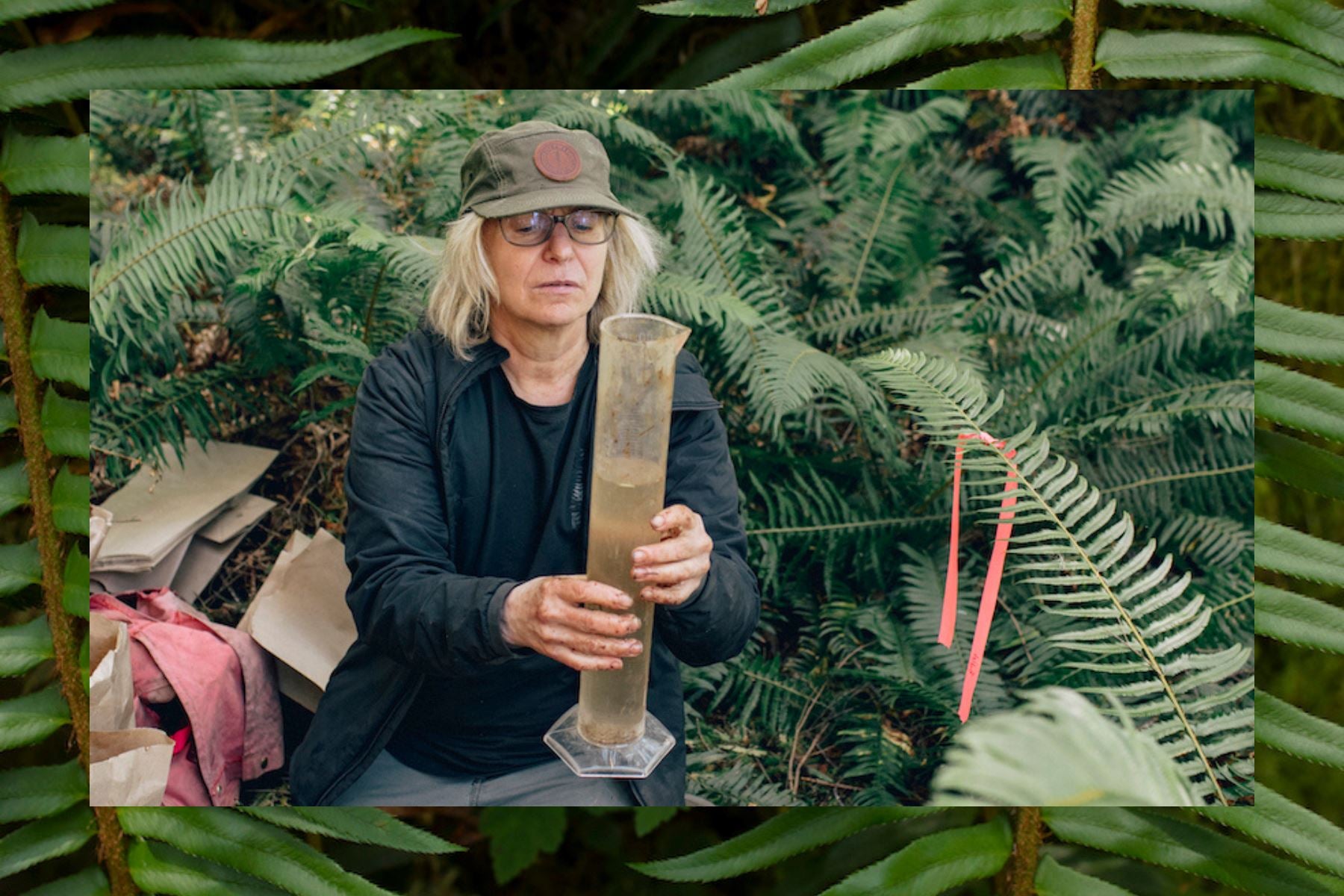This profile and Q&A is a continuation of our series on the Awi’nakola: Tree of Life project.
Paul Walde is an interdisciplinary artist and professor at the University of Victoria. Often using sound and music composition in performance works that take place in the natural environment, Walde has been engaged with addressing environmental issues for more than 25 years.
Walde’s best-known work, Requiem for a Glacier, involved bringing a 55-piece choir and orchestra to perform live on the Farnham Glacier in the Purcell Mountains in part to bring attention to the then proposed—now shelved—Jumbo Glacier Resort development project, as well as climate change. The resulting multichannel sound and video installation has been shown all over the world and continues to be exhibited to this day.

His recent and current exhibitions include Alaska Variations at Indexical; HYPER-POSSIBLE: The 3rd Coventry Biennial at the Herbert Art Gallery and Museum; Ecologies: Song for the Earth at Musée des Beaux-arts de Montréal; and Weeks Feel Like Days, Months Feel Like Years at the Anchorage Museum.
We caught up with Walde after our week with the Awi’nakola: Tree of Life team in Kwakwaka’wakw Territory, where he spent the majority of his days working on his future project, Forestorium. The proposed project is an operatic site-specific performance and subsequent video installation focused on a remaining unprotected old growth forest on Vancouver Island. We discussed with him his role in the Awi’nakola Project, how art and culture can be instrumental in social and environmental movements, and how he became involved in "artivism."

ecologyst: Much of your art centers around the environment. What led you to bridging your art with advocacy?
Paul Walde: I first became interested in working with forms within the environment when I was living in New York. The lack of daily contact with the natural world was in stark contrast with my experience growing up in northern Ontario. When I returned to Canada, I started working directly with forms in the environment to learn and develop a new visual vocabulary. In 2002, when visiting the Yukon to develop a new curriculum for an art program up there, I became aware of the threats of melting permafrost on the local infrastructure—which was already a problem. Further research into melting permafrost resulted in my awareness of the immense dangers posed by global heating which was not widely reported at the time. This was a turning point for me where I realized that if I was to continue to work with landscape and the environment I needed to address these issues as well and this in turn led to what some have called my artistic activism or "artivism".
e: What is your role in the Awi’nakola: Tree of Life project?
PW: I've been asked to develop ways to respond artistically to Indigenous knowledge and the science that is being produced by the TOL science team. This of course is no small undertaking but it is directly related to the work I've been doing for years so it's not like starting something new but rather building on past work.
e: How did you become involved with the project?
PW: Ma’amtagila Hereditary Chief Mak’wala, Rande Cook, invited me in 2021 when he was setting the project up. However, we've been friends for much longer and he's been talking to me about his plans for Ma'amtagila territory for well over five years, though I wasn't sure how it would shape up and I don't think Rande knew at that time either. His discovery of Suzanne Simard's work and recognition of the parallels between her research and Kwakwa̱ka̱ʼwakw cosmology transformed his vision for the group, while the current rate of deforestation and his fight to have his people recognized has given it urgency.

e: Are you able to explain your idea for your art project and how it ties into the Awi’nakola: Tree of Life project?
PW: Forestorium is a proposed operatic site-specific performance and subsequent video installation focused on a remaining unprotected old growth forest on Vancouver Island. In July 2021 I visited an unprotected stand of old growth forest for a week-long micro-residency. Field notes, video and audio footage, observations, reflections, insights, and hallucinations on and of this extremely endangered environment are the basis of the chamber opera which I propose to stage at the same site—whether the forest still exists or not.
Information from the residency is complemented by an inventory of species observed in the forest during annual bio-blitzes, reflections on up-to-date research regarding tree communication, and performative transcriptions of some engendered species living there. These texts and sounds are contrasted with BC government press releases approving the auction of old growth forests for logging, as well as a musical transcription of a giant tree being felled. This performance will be staged for—or possible in memoriam of—the forest and will be captured by a film crew and combined with footage from various visits to old-growth forests to be the basis of a three-channel video and audio installation. The score and libretto, along with projected video footage from the forest, will be the basis of an indoor theatre piece to be completed after the installation. I'm currently in the process of composing the opera and information generated by the Awi'nakola: Tree of Life group will inform and be included in this work.
e: What do you think the role of art and culture is in projects like these, where they're primarily science-led?
PW: Science has been a part of my work for decades already. Much of the work either deals with or is inspired by scientific thought or directly with data. I don't think Rande or the culture crew see TOL as being science-led—though I will concede that the scientists are more visible in terms of deliverables at this point. However, this will change in the near future. The bottom line is that dominant global cultural values which include colonialism, corporate capitalism, and industrialism have gotten us into the ecological, financial, and spiritual mess that we find ourselves in. No one person is to blame, however, rather it demonstrates the collective power of these ideas. We need different ideas and we need to shift our culture and cultural values to one in which we can participate in the environment in a regenerative way. It is my opinion that as artists, one of our jobs is to create the culture that we want to live in. Reconciliation and decolonisation are not just political issues—they have a rich cultural dynamic and as an artist I find this very inspiring.
e: What has been your biggest takeaway from our week with the Awi’nakola: Tree of Life team up in Ma'amtagila and Namgis territories?
PW: I've learned a lot from this group. I'm beginning to understand what a forest is—which is not just a group of trees. We have tree plantations across this province that are not really forests. Forests and especially old growth forests are generative ecosystems bursting with bio-diversity. When these systems are destroyed for the sake of lumber, they take with it the life supporting ecosystem that we are part of with it.

e: Why do you think it's important for projects like these to be Indigenous-led?
PW: Indigenous people lived for over 10,000 years on this island in a regenerative way. They benefited the environment rather than just benefitting from it, and they helped these ecosystems thrive through practices that evolved over thousands of years. The fact that humans had and have this knowledge and the culture that goes along with it should be inspirational to anyone who is looking to recalibrate their relationship with the environment. The concept of permaculture has the word culture baked in, and Indigenous cultures and land stewardship can help us combat some of the biggest threats to humanity like global heating, mass extinction, and ocean acidification while as the same time cure us of the negative aspects of our culture including colonialism, white supremacy, and corporatism.
e: What's your goal for the exhibition?
PW: I think there will be many exhibitions, publications, and public programs. Our goals are nothing short of promoting positive cultural values to help empower people to think differently about themselves; to move beyond the negative news cycle to find new cultural values that will help us take on the major crises facing humanity.
e: Any last message you'd like to share?
PW: I think it's important for individuals not to get caught up in the negative information loop that we all suffer through—there's a lot of bad news out there. However, one's individual actions did not get us to this point and they won't get us out of our troubles. We need to focus on positive change and how we as a collective can change for the better. You are already connected to the environment and each other by simply breathing the same air. Let's start with that.
![]()
To learn more about the Awi'nakola: Tree of Life Project, read our Field Note. To donate to the project, visit the Awi'nakola website.
Photos 1 and 5 by Rene Gauthier
Photo 2 by Pat Morrow
Photo 3 by Mark Worthing
Photo 3 by Joshua Cogan


